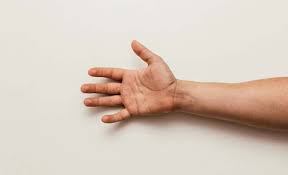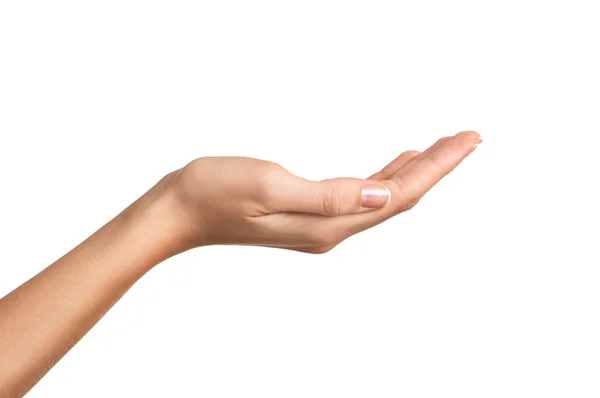The Hand: Anatomy, Functions, and Importance
The human hand is an incredible structure that plays a vital role in our daily lives. From grasping objects to expressing emotions, the hand is essential for countless activities. In this article, we will explore the anatomy of the hand, its various functions, common injuries and conditions, and the significance of hands in communication and art. By understanding the hand’s complexities, we can appreciate its importance in our lives.
1. Anatomy of the Hand
Understanding the anatomy of the hand is crucial for recognizing its functions and capabilities. The hand consists of several components, including bones, muscles, tendons, ligaments, nerves, and blood vessels.
1.1. Bones of the Hand
The hand contains 27 bones divided into three main categories: carpals, metacarpals, and phalanges.
- Carpals: There are eight carpal bones that form the wrist, arranged in two rows. These bones are crucial for the wrist’s flexibility and movement. The carpal bones include:
- Scaphoid
- Lunate
- Triquetrum
- Pisiform
- Trapezium
- Trapezoid
- Capitate
- Hamate
- Metacarpals: There are five metacarpal bones, one for each finger. These bones connect the carpals to the phalanges and provide the hand’s structure.
- Phalanges: The fingers contain a total of 14 phalanges—three for each finger (proximal, middle, and distal) and two for the thumb (proximal and distal). The flexibility and dexterity of the fingers come from these small bones.
1.2. Muscles and Tendons
The muscles responsible for hand movement can be divided into two groups: intrinsic and extrinsic muscles.
- Intrinsic Muscles: These muscles are located within the hand itself and are responsible for fine motor skills and finger movements. They include:
- Lumbricals: Allow for bending the fingers at the metacarpophalangeal joints.
- Interossei: Assist with finger abduction and adduction.
- Thenar muscles: Control thumb movements.
- Hypothenar muscles: Control movements of the little finger.
- Extrinsic Muscles: These muscles originate in the forearm and extend into the hand via tendons. They are responsible for gross movements and power grip. Key extrinsic muscles include:
- Flexor digitorum superficialis and profundus: Flex the fingers.
- Extensor digitorum: Extend the fingers.
1.3. Nerves of the Hand
The hand is innervated by three primary nerves:
- Median Nerve: Controls sensation in the thumb, index, middle finger, and part of the ring finger. It also innervates some muscles in the thenar eminence.
- Ulnar Nerve: Responsible for sensation in the little finger and half of the ring finger. It also controls many intrinsic hand muscles.
- Radial Nerve: Controls the wrist and finger extensors, providing sensation to the back of the hand.

1.4. Blood Supply
The hand receives blood supply primarily from the radial and ulnar arteries. These arteries branch off from the brachial artery in the forearm and form two main arches in the palm, supplying oxygen-rich blood to the hand.
2. Functions of the Hand
The hand serves several critical functions that are essential for everyday activities. Its versatility allows us to perform a wide range of tasks, from basic movements to intricate skills.
2.1. Grasping and Holding
One of the primary functions of the hand is to grasp and hold objects. The hand can form various grips, including:
- Power Grip: Involves wrapping the fingers around an object, using the palm and fingers to exert force. This grip is used for holding tools, sports equipment, or heavy items.
- Precision Grip: Involves using the fingertips to manipulate small objects with accuracy. This grip is essential for tasks such as writing, typing, and buttoning clothes.
2.2. Communication
The hand plays a significant role in non-verbal communication. Gestures, hand signs, and body language can convey emotions and messages without the need for spoken words. For example:
- Pointing: Directing attention to objects or directions.
- Waving: A gesture of greeting or farewell.
- Thumbs Up/Down: Indicating approval or disapproval.
2.3. Sensory Function
The hand is equipped with a rich network of sensory receptors that allow us to perceive touch, temperature, pain, and texture. This sensory feedback is vital for:
- Manipulating Objects: Understanding the weight, texture, and temperature of items we touch.
- Protecting the Body: Responding to harmful stimuli (e.g., heat or sharp objects) to prevent injury.
2.4. Artistic Expression
The hand is essential for artistic expression, allowing individuals to create art through various mediums. Whether painting, sculpting, or playing a musical instrument, the hand’s dexterity and coordination enable creativity.
3. Common Injuries and Conditions of the Hand
Despite its remarkable capabilities, the hand is susceptible to various injuries and conditions that can affect its function and range of motion. Understanding these issues can help in prevention and treatment.
3.1. Fractures
Hand fractures can occur due to trauma, falls, or accidents. Common types of fractures include:
- Boxer’s Fracture: A fracture of the fifth metacarpal, often resulting from punching a hard object.
- Scaphoid Fracture: A fracture of the scaphoid bone in the wrist, which can lead to complications if not treated properly.
3.2. Tendon Injuries
Tendon injuries can result from overuse or trauma, affecting the hand’s ability to move. Common tendon injuries include:
- Tendonitis: Inflammation of the tendons, often caused by repetitive movements (e.g., typing or playing instruments).
- Tendon Rupture: A complete tear of a tendon, leading to loss of function in the affected fingers.
3.3. Carpal Tunnel Syndrome
Carpal tunnel syndrome is a common condition caused by compression of the median nerve in the wrist. Symptoms include:
- Numbness or tingling in the thumb and fingers.
- Weakness in the hand.
- Pain that may radiate up the arm.
3.4. Arthritis
Arthritis can affect the joints in the hand, leading to pain, swelling, and reduced mobility. Common types include:
- Osteoarthritis: Degeneration of joint cartilage due to wear and tear.
- Rheumatoid Arthritis: An autoimmune condition that causes inflammation of the joints.
4. Caring for Your Hands
Taking care of your hands is essential for maintaining their health and functionality. Here are some tips for proper hand care:
4.1. Regular Exercise
Engaging in hand and wrist exercises can help maintain flexibility and strength. Simple exercises include:
- Finger Stretches: Gently stretching each finger to improve flexibility.
- Wrist Rotations: Moving the wrist in circular motions to enhance mobility.
4.2. Ergonomic Practices
Adopting ergonomic practices can help prevent strain and injuries, especially for those who perform repetitive tasks. Consider:
- Proper Desk Setup: Ensuring your workstation is set up to promote good posture and reduce strain on the hands.
- Using Ergonomic Tools: Opting for tools designed to minimize hand fatigue and discomfort.
4.3. Moisturizing
Keeping the hands moisturized can prevent dryness and cracking, especially in harsh weather conditions. Use hand creams or lotions regularly to maintain skin health.
4.4. Protective Gear
When engaging in activities that pose a risk to the hands (e.g., construction work or gardening), wearing protective gloves can help prevent injuries.
5. The Cultural and Symbolic Significance of Hands
Hands hold significant cultural and symbolic meanings across various societies. Understanding these meanings can enhance our appreciation of the hand’s role in human expression.
5.1. Cultural Significance
In many cultures, hands symbolize creativity, power, and connection. For instance:
- Hand Symbolism in Art: Hands are often depicted in art to represent creation and human experience.
- Cultural Gestures: Different cultures have unique hand gestures that convey specific meanings (e.g., the peace sign or the “OK” sign).
5.2. Hands in Religion and Spirituality
Hands often hold spiritual significance in various religions. For example:
- Prayer Gestures: In many faiths, specific hand positions are used during prayer or meditation.
- Symbolic Hand Motifs: The “Hamsa” hand is a symbol in several cultures representing protection and blessings.
5.3. The Hand as a Metaphor
The hand is frequently used as a metaphor in literature and language. For example:
- “Lend a hand”: A phrase used to offer help or assistance.
- “Hand in hand”: Suggesting cooperation or unity.
6. Conclusion
The hand is a remarkable part of the human body, essential for a wide range of functions and activities. Its complex anatomy enables us to grasp, communicate, and express ourselves in unique ways. Understanding the hand’s significance helps us appreciate its role in our daily lives and the importance of caring for this vital body part. By nurturing and protecting our hands, we ensure they continue to serve us throughout
our lives, allowing us to engage in the activities we love and connect with others.

